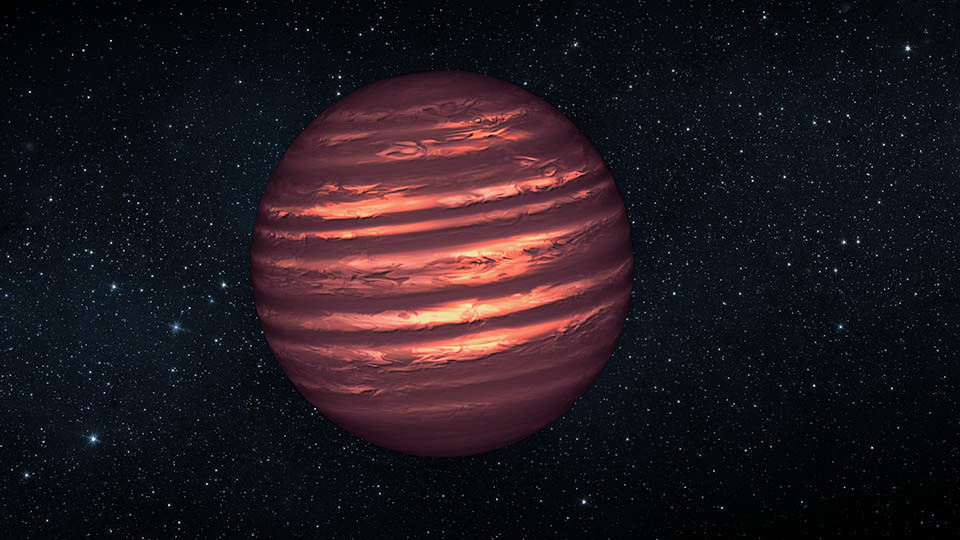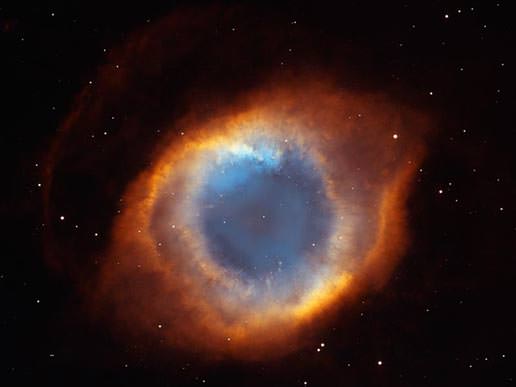[/caption]
Stars get pretty sloppy towards the end of their lives. As the nuclear fuels start to wane, the star pulsates – expanding and contracting like a marathon runner catching her breath. With each pulsation, the dying star belches out globs of gas into space that eventually get recycled into a new generation of stars and planets. But accounting for all that lost material is difficult. Like trying to see a wisp of smoke next to a stadium spotlight, observing these tenuous sheets of stellar material swirling just over the surface of the star is considerably challenging. However, using an innovative technique to image starlight scattering off interstellar grains, astronomers have finally succeeded in seeing ripples of dust flowing off dying stars!
The stars – W Hydra, R Doradus, and R Leonis – are all highly variable red giants, stars that are no longer fusing hydrogen in their cores but have moved on to forming heavier elements. Each is completely enveloped by a very thin dust shell most likely made up of minerals like forsterite and enstatite. These grains can only form once the raw ingredients have flowed some distance from the star. At distances roughly equal to the size of the star itself, the gas has cooled enough to allow atoms to start sticking together and forming more complex compounds. Minerals like these will go on to seed asteroids and possibly rocky planets like the Earth in the continual cycle of death and rebirth playing out in the Galaxy.
The paper describing this discovery, accepted to the journal Nature, can be found here.
The astronomers who recently reported this discovery used the eight meter wide Very Large Telescope in the Chilean Atacama Desert – and a suite of clever tools – to tease out the subtle reflections off these dust shells. The trick to seeing light bouncing off interstellar dust particles involves taking advantage of one of light’s wave properties. Imagine you had a length of rope: one end is in your hand, the other tied to a wall. You start to wiggle your end and waves travel down the cord. If you move your arm up and down, the waves are perpendicular to the floor; if you move your arm from side to side, they are parallel to it. The orientation of those waves is known as their “polarization”. If you mixed things up by constantly changing the direction in which your arm was oscillating, the orientation of the waves would be similarly confused. The rope would bounce in all directions. With out a preferred direction of movement, the rope waves are said to be “unpolarized”.
Light waves emitted from the surface of star are just like your chaotic rope flinging. The oscillations in the electric and magnetic fields that make up the propagating light wave have no preferred direction of motion – they are unpolarized. However, when light bounces off a dust grain, all that confusion drops away. The waves now oscillate in roughly the same direction, just as if you decided to only bounce the rope up and down. Astronomers call this light “polarized”.
A polarizing filter only allows light with a specific orientation to pass through. Hold it one way, and only “vertically polarized” light – light where the electric field is oscillating up and down – will pass. Turn the filter ninety degrees, and you’ll only transmit “horizontally polarized” light. If you have polarizing sunglasses, you can try this yourself by rotating the glasses and watching how the the scene through the lenses gets brighter and darker. This is also a nice demonstration of how our atmosphere polarizes incoming sunlight.
A shell of dust around a star will polarize the light that bounces off it. Just like the sky gets brighter and dimmer as you turn your sunglasses, looking at a such star through differently oriented polarizing filters will reveal a halo of polarized light surrounding it. The different orientations will reveal different segments of the halo. By combining polarimetric observations with interferometry – the beating together of light waves from widely separated spots on a telescope mirror to create very high-resolution images – a thin ring of scattered light reveals itself around these three stars.
These new observations represent a milestone in our understanding of not only a star’s end game but also the production of interstellar dust that follows. Like the smokestacks of great factories, red giant stars expel a soot of minerals into space, carried aloft by stellar winds. With meticulous observation, results such as these can help tie together the death of one generation of stars with the birth of another. Unraveling the mysteries of grain formation in space takes us one step closer to piecing together the many steps that lead from stellar death to the creation of rocky planets like our own.




